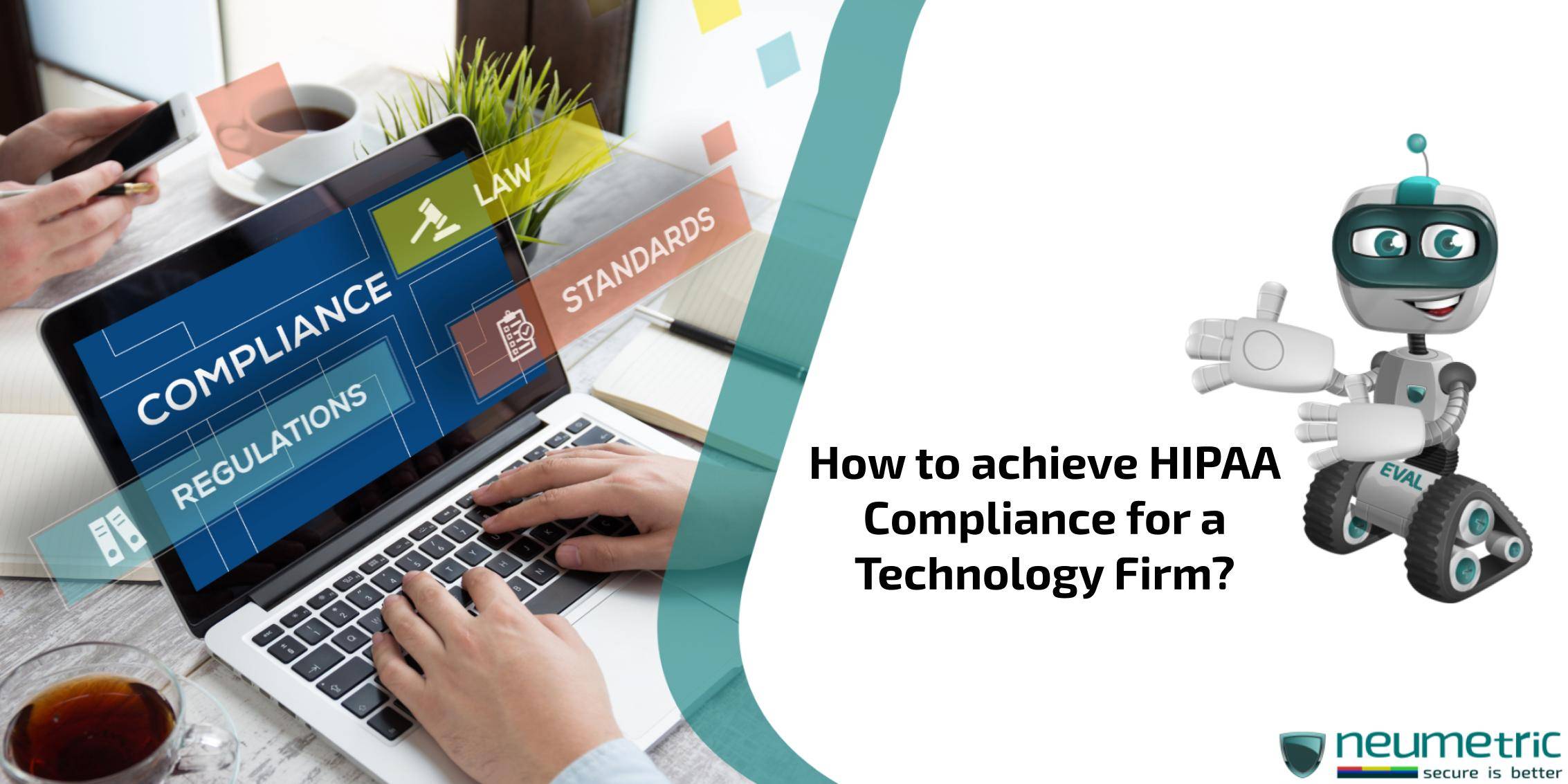Table of Contents
ToggleIntroduction
The Health Insurance Portability & Accountability Act [HIPAA] was enacted on Wed, 21-Aug-1996. It aims to protect sensitive patient health information. For technology firms handling electronic healthcare data, achieving & maintaining HIPAA compliance is crucial yet challenging. This Journal provides an overview of HIPAA regulations, the key elements of HIPAA compliance, the unique challenges for technology firms & actionable steps to ensure compliance both now & in the future as regulations evolve.
With data breaches increasingly common, patients expect their health information to remain private & secure. Non-compliance can harm a firm’s reputation & invite heavy penalties. By prioritizing HIPAA compliance from the software design stage itself, tech firms can build trust & unlock opportunities in the healthcare industry. Ongoing training, auditing & adoption of security technology also play a vital role. While no single action guarantees compliance, a proactive approach can help firms fulfill both legal & ethical obligations in handling protected health information.
Understanding HIPAA Regulations
At over 100 pages long, the full HIPAA regulations text can be overwhelming. Signed into law in 1996 during the Clinton presidency, HIPAA aimed to allow ease of health coverage when changing jobs. However, the rapid digitization of health records over the next decade raised privacy concerns.
As a result, the HIPAA Privacy Rule came into effect in 2003. This expanded the law’s scope to safeguarding the confidentiality & integrity of electronic protected health information [ePHI]. Further reinforced by the Security Rule in 2005, HIPAA lays out a series of administrative, physical & technical safeguards. These range from role-based data access to encryption to facility entry controls. Special scrutiny is given to Business Associates who handle PHI on behalf of Covered Entities like healthcare providers. Firms that create, receive, store or transmit PHI come under this category.
Specific HIPAA provisions like the Breach Notification Rule also require reporting data breaches to the United States Department of Health and Human Services [HHS] & impacted individuals. The definition of Protected Health Information [PHI] itself is also expansive, encompassing typical patient data like diagnoses, treatment records, insurance details as well as full face photos or biometrics. With penalties reaching up to $1.5 USD million per violation, ongoing compliance is key.
Key Elements of HIPAA Compliance
Translating the lengthy HIPAA text into practice involves focusing on four key areas – the Privacy Rule, Security Rule, Breach Notification Rule & basic Limited Data Set Use standards.
Privacy Rule
The Privacy Rule regulates PHI use & disclosure by covered entities & business associates. Core elements include:
- Policies & Procedures: Documented processes for activities like PHI storage, transmission, access levels & sharing with vendors/partners.
- Workforce Training: All employees handling PHI must undergo regular training on HIPAA regulations & the firm’s privacy & security policies.
- Patient Rights: Systems for patients to access PHI, request amendments or restrictions to records & get copies of disclosures.
- Minimum Necessary: Access limits to only the minimum PHI required for specific roles. Need-to-know basis.
- Business Associates: Contracts with vendors ensuring they implement HIPAA safeguards.
Security Rule
The HIPAA Security Rule focuses specifically on securing electronic Protected Health Information [ePHI]. Key aspects are:
- Administrative Safeguards: Risk analysis, disaster recovery, emergency mode operations, equipment maintenance, security upgrades.
- Physical Safeguards: Facility access controls, device & media controls, environmental protection of data centers.
- Technical Safeguards: Access controls, audit logs, data backups, protection of communications channels, authentication protocols.
Breach Notification Rule
This rule sets out notification requirements in case of any breach i.e. unauthorized access, use, disclosure, loss, theft or compromise of PHI data. Steps include:
- Report to HHS & individuals in writing within sixty (60) days.
- For breaches affecting over five hundred (500) patients, additionally notify prominent media outlets.
- Maintain documentation of breach incidents for six (6) years.
Limited Data Set Use
A limited data set excludes most direct identifiers. Rules for entities receiving such data include:
- No shifting from a limited data set to fully identifiable data without patient authorization.
- Establish data use agreements with receiving entities.
- Report any unauthorized information disclosures.
Challenges in Achieving HIPAA Compliance for Technology Firms
For healthcare providers, the path to HIPAA compliance is relatively clear despite requiring significant effort. But technology firms working in healthcare data face unique scenarios like:
- Data Scale Challenges: Providing compliance as a service across terabytes of client data from diverse sources poses risks. Lapses anywhere from identification to encryption to access controls are hard to trace.
- Legacy Systems Issues: Merging cutting edge solutions with older systems can create security gaps, unless legacy apps are tightly integrated or retired completely. Data mapping is also critical.
- Compliance Burden on Agile Teams: Speed vs compliance is a tough balance, especially for small firms. Documentation can slow development, so the right abstractions between legal/engineering roles are vital.
- Emerging Technology Uncertainty: As fields like Artificial Intelligence [AI], Internet of Things [IoT] & the cloud evolve, technology can outpace policy. So regulations play catch up, requiring frequent re-evaluation of controls.
Common Pitfalls
- Attempting manual compliance without cogent technical & physical safeguards.
- Focusing solely on compliance at project outset without ongoing review.
- Insufficient training for internal teams & third-party associates.
- Lacking clear reporting structures, audits & accountability measures.
Requirements to Achieve HIPAA Compliance
Conduct Annual Risk Assessments: Mandated by HIPAA, documenting all assets, threats & vulnerabilities provides contextual clarity to frame technical & administrative safeguards. Examine risks across infrastructure, policies, vendor ecosystems & employee habits. Maintain detailed breach response flows.
Develop Policies & Procedures: Move beyond software checklists to formalize each process impacting PHI security – right from password policies to business associate contracts to data disposal procedures. Ensure regular testing, review & training. Automate policy documentation for access control.
Implement Safeguards & Best Practices
- Encryption of data-at-rest & data-in-transit is critical, deploying the latest cryptographic protocols like AES 256.
- Enforce complex password policies & establish Multi-Factor Authentication [MFA].
- Maintain detailed audit trails, conduct internal & external security audits & enable compliance reporting.
- Establish sound network security measures like intrusion detection systems & firewalls with DMZ infrastructure.
- Integrate security deep into software design & architecture.
- Reassess Workflows: Eliminate unnecessary movement of PHI across apps, devices or employees. Clearly define PHI access needs & implement role-based permissions. Regularly retire legacy data & assets to shrink the attack surface area.
- Devise a Breach Response Plan: Despite best efforts, breaches can occur – via employees, vendors or infrastructure flaws. Develop & continually test clear flows for identifying, reporting & mitigating breaches with minimal data impact.
Technology Solutions for HIPAA Compliance
Beyond overarching measures, purpose-built technology also eases the compliance burden across communication, storage, access provisioning & analytics.
Secure Communication: Tools like HIPAA-ready Outlook email, chat apps like Spok & FirstUp & telehealth platforms enable safe collaboration across the provider-firm-patient spectrum.
Encrypted Storage: Modern data warehouses like Snowflake allow granular access controls & field-level encryption for analytics use cases. Distributed object storage solutions like AWS S3 provide server-side encryption coupled with stringent access policies.
Access Controls & Authentication: Robust methods like OAuth/Security Assertion Markup Language [SAML], Secure Shell [SSH] keys, Single Sign-On [SSO] & Remote Authentication Dial-In User Service [RADIUS] authenticate users & assets before enabling PHI access. Solutions like Okta & Azure AD simplify user provisioning & automate HIPAA compliance reporting across cloud tools, SaaS apps & VPN user pools.
Future Trends in HIPAA Compliance for Technology Firms
As healthcare apps & infrastructure rapidly modernize, technology firms must stay vigilant of three (3) key shifts:
- Artificial Intelligence [AI] & Compliance Automation: Federated learning & confidential computing approaches will allow firms to tap AI while preserving privacy. Automated policy mapping, breach detection & compliance audits via Machine Learning [ML] are emerging to ease manual reviews.
- Regulations Playing Catch-up: Personal health record mobile apps, IoT medical devices, telehealth on consumer wearables – such scenarios spark new data custodian issues faster than HIPAA can address. Pending federal privacy bills also signal more stringent future norms.
- Platforms Simplifying Compliance: Specialist healthcare data platforms like Redox with inbuilt compliance modules reduce engineering lift for connected apps. Cloud giants like AWS & Azure now offer managed HIPAA-ready infrastructure covering networks, storage & databases. As more Platform-as-a-Service [PaaS] options emerge, compliance gets bundled as a value-added service.
Conclusion
HIPAA compliance for healthcare data demands year-round disciplined effort spanning policies, software, infrastructure monitoring & understanding evolving regulations. By judiciously leveraging security technologies, the process can be streamlined. For technology firms, compliance-by-design approaches save enormous downstream costs.
Ultimately, robust protection of patient health information is an ethical obligation for custodians, over & above legal requirements. Proactively building quality & security into healthcare products must take precedence over rushed execution. With medical data only set to grow in ubiquity, firms have a rare chance to pair trust with innovation. The time for the healthcare technology industry to prioritize patient-centric privacy while accelerating life-saving application of data is now. Care, concern & candor will light the way forward.
FAQs
What are the consequences of non-compliance with HIPAA regulations for a technology firm?
The penalties for HIPAA non-compliance are severe, with fines ranging from $100 USD to $50,000 USD per violation (capped per year) for “reasonable cause” offenses up to $1.5 USD million per violation for willful neglect. Reputational damage, lost business opportunities & legal fees also accrue rapidly. For healthcare organizations, a data breach often marks the start of financial losses that eventually cause bankruptcies.
How often should a technology firm conduct a risk assessment to maintain HIPAA compliance?
HIPAA regulations explicitly require technology firms to conduct an accurate & thorough risk analysis at least once a year. More frequent assessments may be warranted based on major infrastructure or policy changes. Firms can consider a quarterly review cadence depending on project timelines. The risk analysis directly informs the control selection, so keeping it updated is key.
Can cloud computing solutions be HIPAA-compliant for storing & processing healthcare data?
Yes, cloud infrastructure like Amazon Web Services [AWS], Azure & Google Cloud Platform [GCP] offer a variety of HIPAA-compliant storage, database & analytics options. Technology firms can opt for such specialized cloud products providing the necessary safeguards for Confidentiality ,Integrity & Availability [CIA], of ePHI. Appropriate access controls, encryption methods & secure network architecture must surround the cloud deployment. Firms are still directly liable for compliance.





